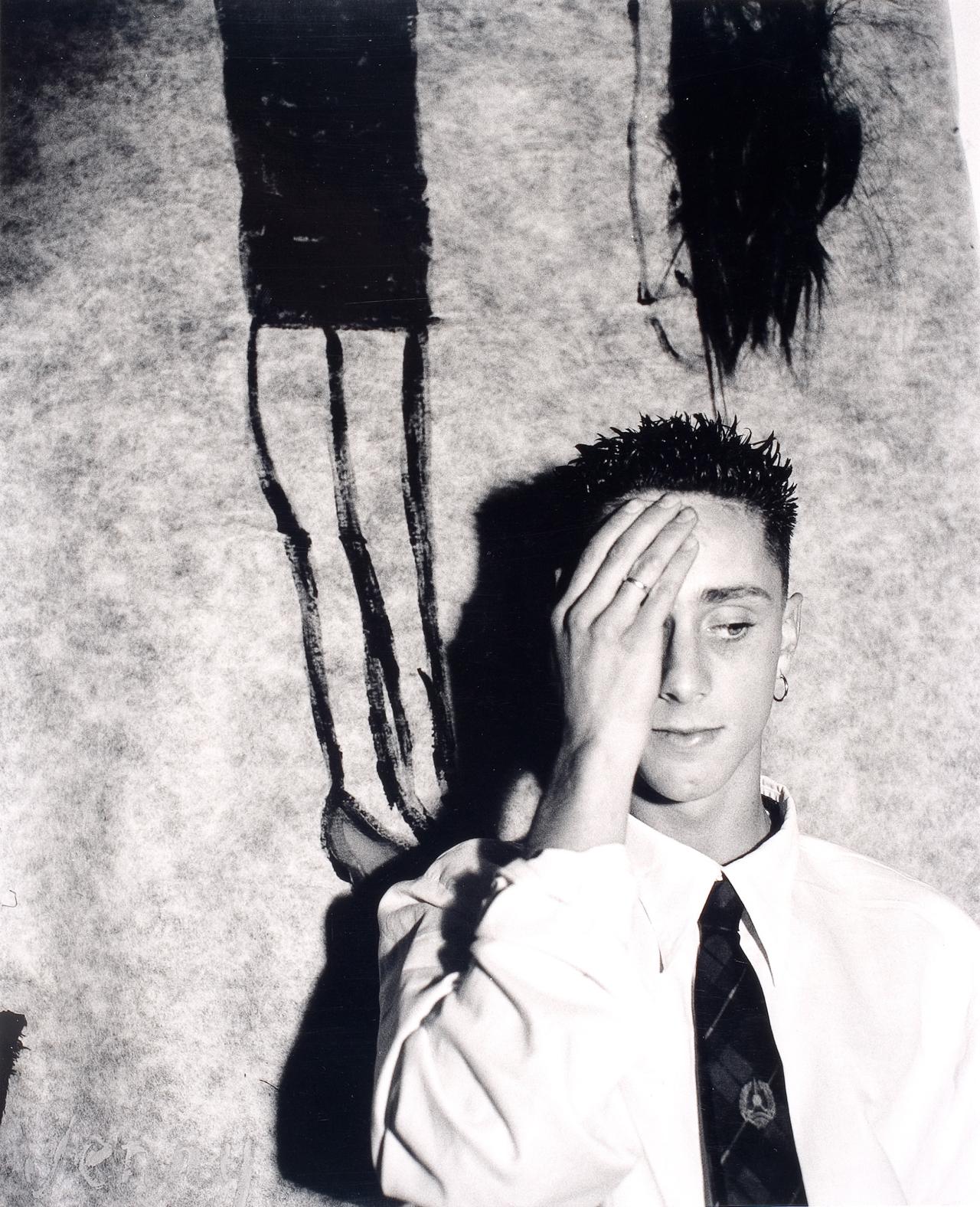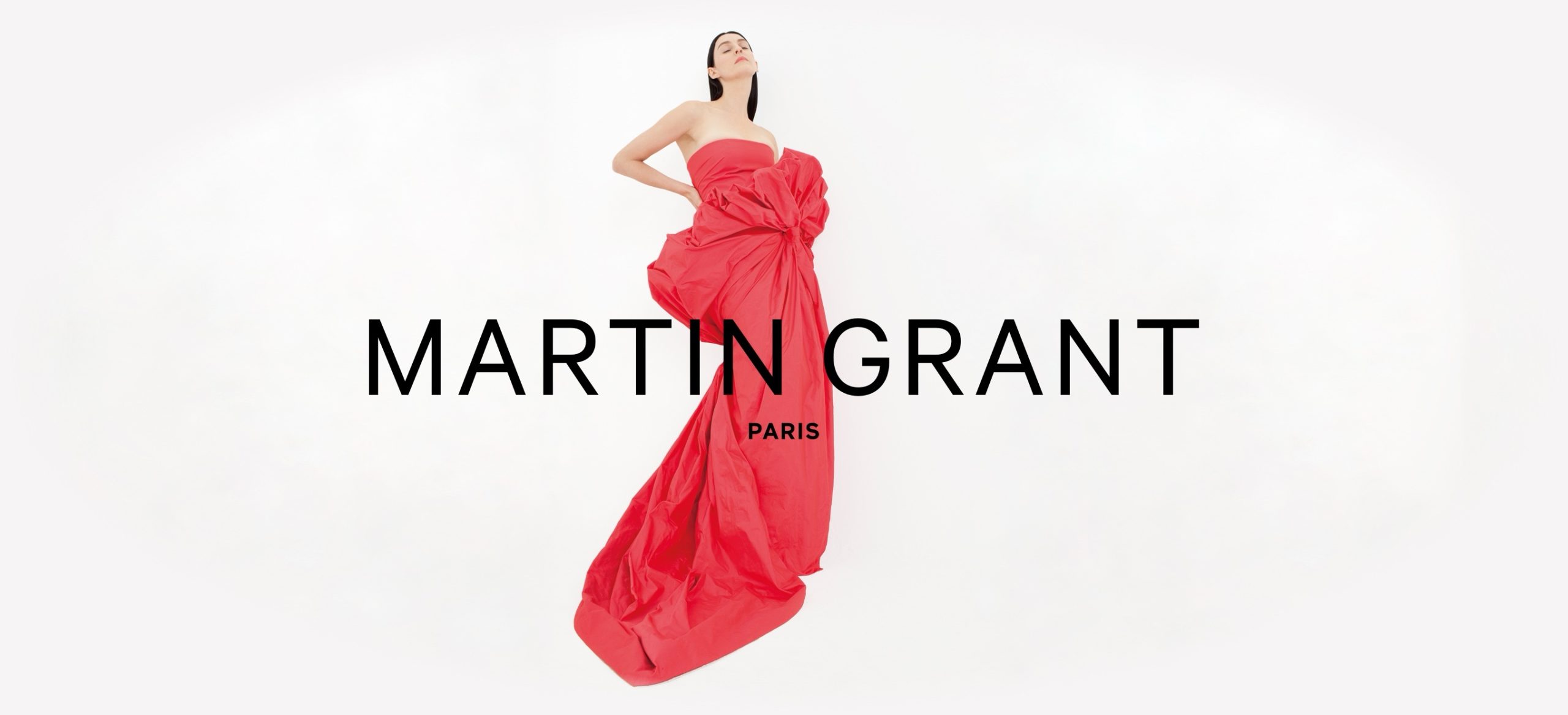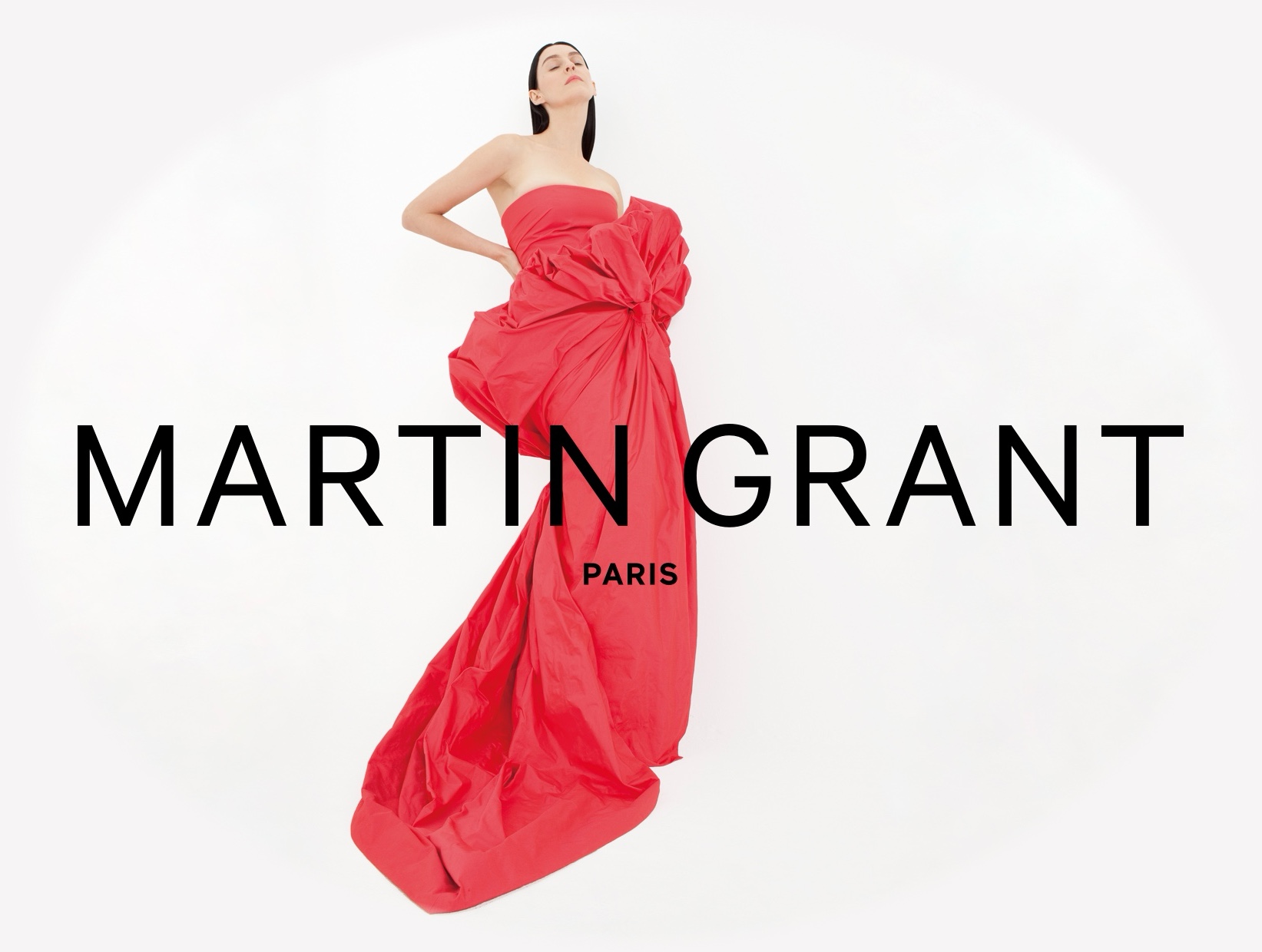A persistent theme at the heart of the work of Martin Grant since the very beginning is his love of collaboration.
As a self-taught designer, the role that family members such as Martin Grant’s mother, grandmother and early mentors have played in encouraging and developing his aspirations is important to acknowledge. Grant was still at primary school when he progressed from paintings of ballgowns to working with fabric, scissor and needle. This shift came soon after a weekend spent with his grandmother, Nancy, who was a practising seamstress.
In 1981, at the age of sixteen, Grant left home and school in Melbourne’s suburban Blackburn to explore life in the city. A short time later, he established his own label and studio, joining the creative throng of milliners, art directors, painters, fashion magazines, model agencies and rock bands spilling from the studios and offices of Stalbridge Chambers at 443 Little Collins Street. Along with his fellow Stalbridge residents, Grant regularly presented his designs in the iconic parades staged by the Fashion Design Council (FDC), a non-profit organisation established by the Victorian state government in the early 1980s.
I think it was an important time in Melbourne in terms of fashion,’ reflects Grant. ‘It was the first time that young designers were given a voice and a platform to show their work.’ Along for the journey were two of his friends and earliest collaborators, milliner Tamasine Dale and photographer Polly Borland.
Tamasine Dale
The creative relationship with Dale started with her creating an array of hats in straw and sculpted felt to finish Grant’s silhouettes. When looking back at this time, Dale particularly admires ‘the way that [Grant] structured his business and working life… merging lifestyle, friendships and work. It was a really good introduction to being able to live that life, an artistic life.’
An important friendship grew out of their work together, and their partnership continues to the present day. Grant describes it as ‘such a natural process that exists that I can say in few words, and it can be understood and translated and picked up.’ Dale travels to Paris regularly to work on forthcoming collections with Grant.
Rosslynd Piggott
Melbourne artist Rosslynd Piggott moved in the same circles and was also creating work for the earliest of the FDC presentations. She became a loyal client of the emerging designer and, in turn, a lifelong friend and collaborator. Among her extensive collection of Grant’s work is an early slashed-back dress, which Piggott donated to the NGV in 1999. ‘It was something quite new at that time,’ Piggott says, on what drew her to Grant’s work. ‘Martin was much more about structure, spare but not boring, lean minimalism. [His designs are] incredibly sexy in this beautiful, elegant way.
Polly Borland
Collaborations with photographers have also been a strong thread throughout Grant’s career. It all began in the early 1980s when the then-emerging photographer Polly Borland began regularly documenting Grant’s work, initiating another key and enduring creative relationship. Borland began by focussing on portraiture and editorial work, and quicky established herself as a go-to photographer for Australian Vogue, Vogue Living, Pol, and Tension Magazine, during which time she frequently shot the work of Grant. Later, when based in England, Borland shot images for influential magazines Face, Arena and BLITZ, as well as portraits with a specialty in Australian expatriates such as Nic Cave and Cate Blanchett. One image included in the exhibition features Blanchett wearing Grant’s striking red wool Joan of Arc dress, 1999. Borland has continued to work closely with the designer and developed a distinct language for documenting his work.

Jenny Watson
One of Borland’s earliest portraits of the young designer (also on display in the NGV exhibition) shows him standing in front of Jenny Watson’s painting This Year’s Fashion, 1984. Watson and Grant had studios opposite each other in Stalbridge Chambers in the early 1980s and used to swap clothes for paintings. The work remains a talisman of sorts for the designer who gives it pride of place in his studio to this day. They collaborated years later in 2007, when artist Jenny Watson created a series of twenty-four drawings depicting a girl wearing one of Grant’s designs and pursuing her runaway dog. The drawings were transformed into a short, animated film titled Walking the dog that was screened during the presentation of his 2007 spring–summer collection at Paris Fashion Week.
Christian Louboutin
After his more to Paris in the early 1990s Grant opened his first boutique in a tiny former barber’s shop on Rue des Rosiers in the Marais district. The endeavour marked his new life and career as a Paris-based designer and increased Grant’s profile among important clients and industry figures. Around this time, French shoe designer Christian Louboutin lent Grant his iconic red soled shoes to support the young designer and accompany his work on the runway. With Louboutin, Grant formed another important creative partnership, and the pair eventually collaborated on a range of shoes especially for the Martin Grant label that continues to this day. In 2013, when Grant designed the Qantas uniforms, he once again collaborated with Louboutin on the creation of the shoes.



